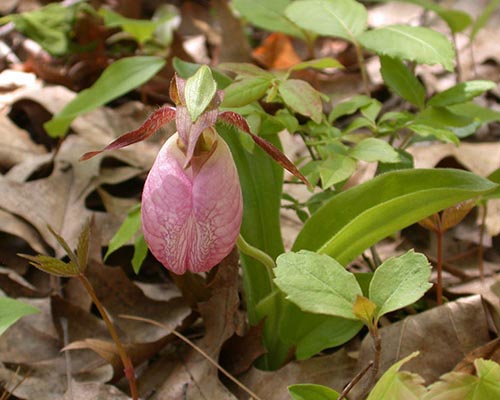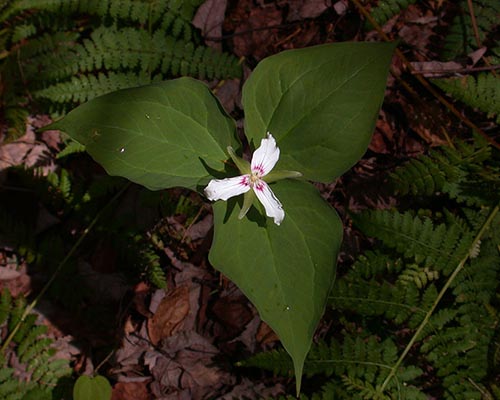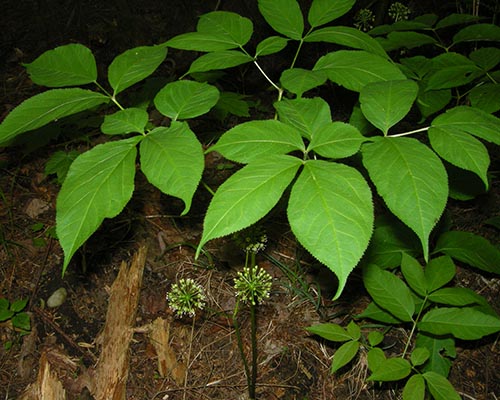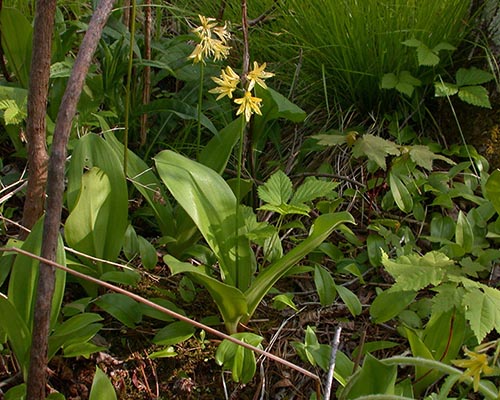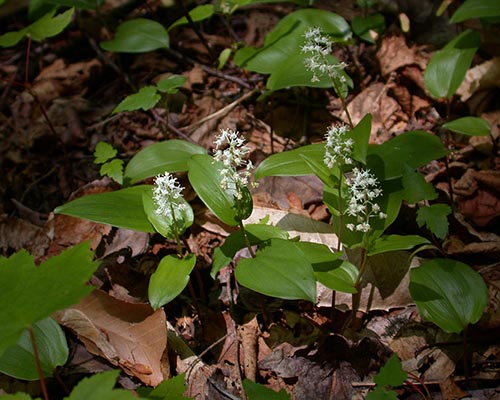In the spring, you will find many wildflowers blooming in this area. Wildflowers might adapt to bloom in the spring for various reasons. Some depend on the moist conditions brought on by snowmelt; whereas others, particularly woodland species, take advantage of the availability of light before the trees above them leaf out and the canopy closes. Early blooming and maturation might also help these spring flowers avoid times of peak herbivory, as many insects hatch later in the year. In evolutionary biology, as in physics, one might say, “nature abhors a vacuum.” Available niches don’t stay vacant for long.
Many of these early-blooming species are ephemerals, meaning that they are visible for only a brief period of time to take advantage of the early spring conditions. These plants will produce leaves, flowers, fruits and seeds in only a few weeks, while also gathering energy that they store in below-ground structures such as corms or bulbs. That storage provides them with the energy they will need to get their growth started in the following year.
Pink lady’s slipper (Cypripedium acaule) is a perennial orchid. It is widespread in some areas of eastern North America, but is classified as Vulnerable in New York. So please do not disturb it; it will not survive transplantation. It is found in environments from partial to full shade, most commonly in pine forests but also in deciduous woodlands.
Painted trillium (Trillium undulatum) is a characteristic trillium of the Adirondacks. It prefers strongly acidic soils and deep shade and thus tends to be found abundantly under hemlocks but also other acid-loving trees such as white pine, red maple, balsam fir, and red spruce. It is named for the pink chevron in the center of its flowers, which appears to have been painted on. Trilliums are a favorite food for deer, which sometimes overgraze and kill them.
Wild sarsaparilla (Aralia nudicaulis) is not true sarsaparilla, from which the sarsaparilla drink is made. Unless absolutely certain of identification, it is important not to eat any organism. However, wild sarsaparilla does have edible purple-black berries with a slightly spicy, sweet flavor. It is often found in large clonal colonies, all having arisen from one individual.
Clintonia or blue-bead lily (Clintonia borealis) is a perennial lily found in shaded forest spots, usually in large, homogeneous colonies that can span hundreds of square meters. These colonies are typically connected by underground rhizomes and thus are all genetically identical. The name “blue-bead lily” comes from the brilliant blue berries of this plant, which are mildly toxic.
Canada mayflower (Maianthemum canadense) is a dainty lily with white flowers found in both deciduous and evergreen forests. The dull red fruits of this perennial are mature by fall and have a bittersweet taste; however, they are inedible. Like wild sarsaparilla and blue-bead, Canada mayflower forms large clonal colonies connected by rhizomes.
Early-blooming plants can sense the onset of spring in various ways, from warming temperatures to lengthening days or actually shortening nights. As a result of this variation, climate change (see the Climate Change station) has been observed to affect different species in different ways. Species that bloom when triggered by warming temperatures may bloom earlier in the spring, leading to possible timing mismatches with their pollinators. Species that respond to day length, on the other hand, do not bloom earlier as the climate changes, which may cause them to miss the early spring window of opportunity and be shaded out or eaten by herbivores. When ecological networks are disturbed by rapid change, long-term species survival is often unpredictable.

